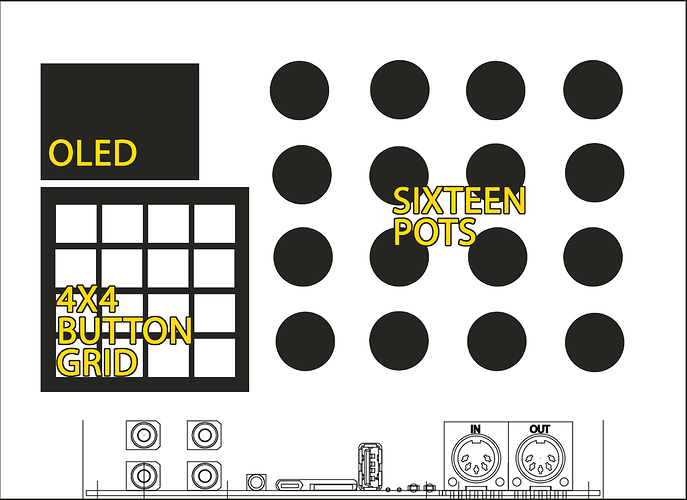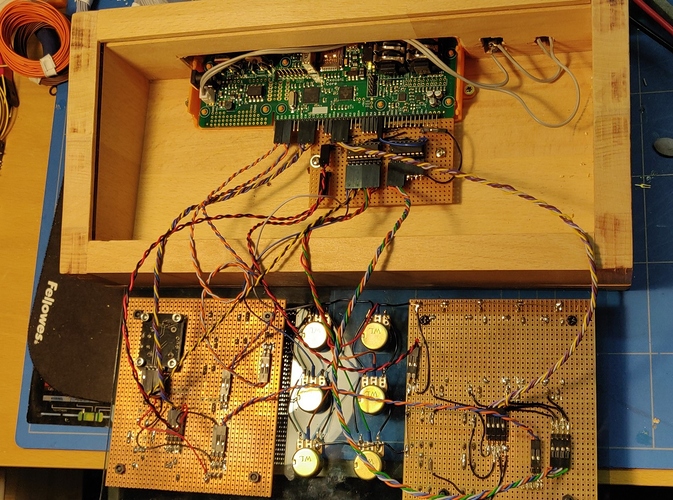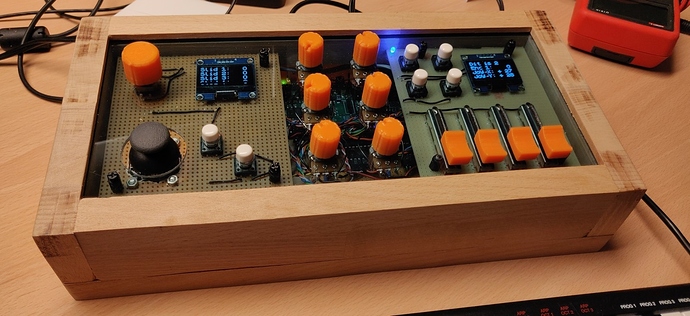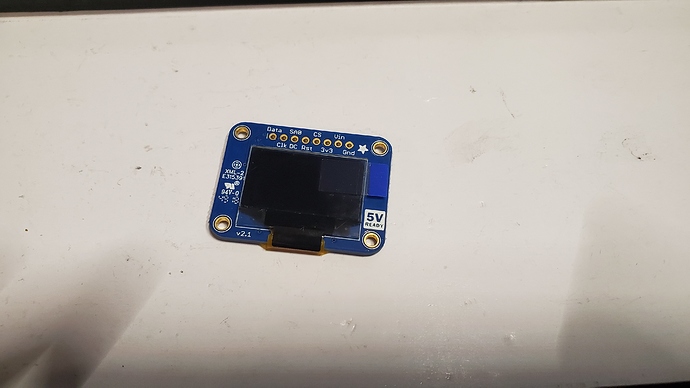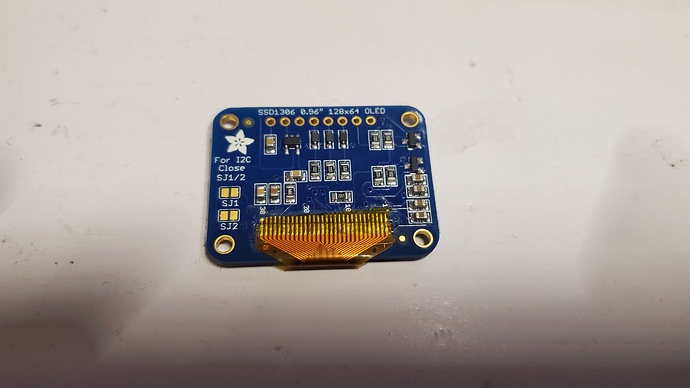Warning: this post is long and is written by an incredibly ambitious and clueless person.
A few weeks ago, I made a preliminary post asking about the enclosure I wanted to build, in order to make sure that it was realistic. Luckily, the good people of this community informed me that it was. Since the post, my Axoloti Core has arrived in the mail and I need to stop playing with it for 2 seconds so I can build an enclosure for the thing! There's no real rush, apart from my excitement to materialize this idea.
So, for the build
This is a very rough sketch of the general idea. By rough, I mean I found the axo schematic somewhere on this site and pasted it into photoshop, eyeballing the size. Not a final product. The faceplate will be 8.25" x 6" (need to get more familiar with the metric system before I start using the Synth Panels Designer extension!) The enclosure will be inside of a prebuilt box, so the size of the faceplate is fixed. The Axoloti will be visible out the front, but only the in/outputs will be visible.
I tried to correctly place the dimensions of the OLED w/breakout board, as well as the 4x4 button grid correct to Adafruit's specs. As for the pots, I could't find the size of pots anywhere, so each one is inside a 1"x 1" square while the actual circle sizes are completely arbitrary. The knobs will probably be much thinner.
Now for the parts I need help with.
I'm a beginner to electronics. I've used a soldering iron before, but consider this the project I'm "beginning" electronics with. In my previous post, I was informed that I might want to get a multiplexer, while someone else suggested I get a Teensy 4.1 which would do the job a multiplexer would and transmit the signal from analog to midi. I've decided to go with the Teensy. Other than 'it sends midi signals and connects via usb', I haven't got a clue how a Teensy works.
The following questions will illustrate that I need help with basically everything, but I understand that answering answering all these questions might take you forever, so I'm willing to consume any material (video, books) that will answer these questions also. Please just point me where to go!
The questions (imagine that I don't even know if I'm asking the questions properly):
- How do I connect a Teensy to an Axoloti?
- Do I need anything, aside from wires, between the Teensy and the Axoloti?
- Will I be using resistors, capacitors, or additional electronic components for this project?
- How does the Axoloti know that it's receiving midi signals instead of analog?
- Is the teensy capable of handling all 16 knobs as well as the button grid, button grid LEDs, and the OLED, or should I be using the in/out pins (is that even the right terminology?) on the axoloti, or do I need an additional board to make all these connections?
- Can I mount the pots straight to an aluminum faceplate with the nut/is there anything I need to know about that?
- How to wire pots together.
- Actually, how to wire everything together.
- Something about 3.3 volts that sounded important (yes, it's very important, please tell me about this)
- Can I use the OLED as an oscilloscope without any additional hardware?
Bonus question:
- I found 2 Adafruit 12x16 bit PWM boards on the ground out of nowhere, can I use these somehow? I know that PWM is used on analog synths, and that the Axoloti is digital so it won't do me any good there, but I don't know any more than that!
My current shopping list (please add if I need anything)
- At least 2 breadboards for testing
- 16 pots (I have the knobs)
- A whole bunch of wire (are there different types of wire I should be using?)
- 128x64 OLED display
- 4x4 silicone button pad, LEDs for it, board with buttons that goes under the pad.
- Teensy board (how do I connect it to Axoloti?)
Please feel free to tell me anything I'm missing, and if I've left it out of the questions/list, assume that I don't know that it exists. I'm not worrying about programming the OLED for now, it appears that there are plenty of resources on this forum for that.
If you've made it this far, thanks so much for your time! Doubly so if you're answering any of the questions. I'm excited for this project, and I'm hoping to make a video afterwards to show everyone here, as well as my friends to blow their mind about the Axoloti.

